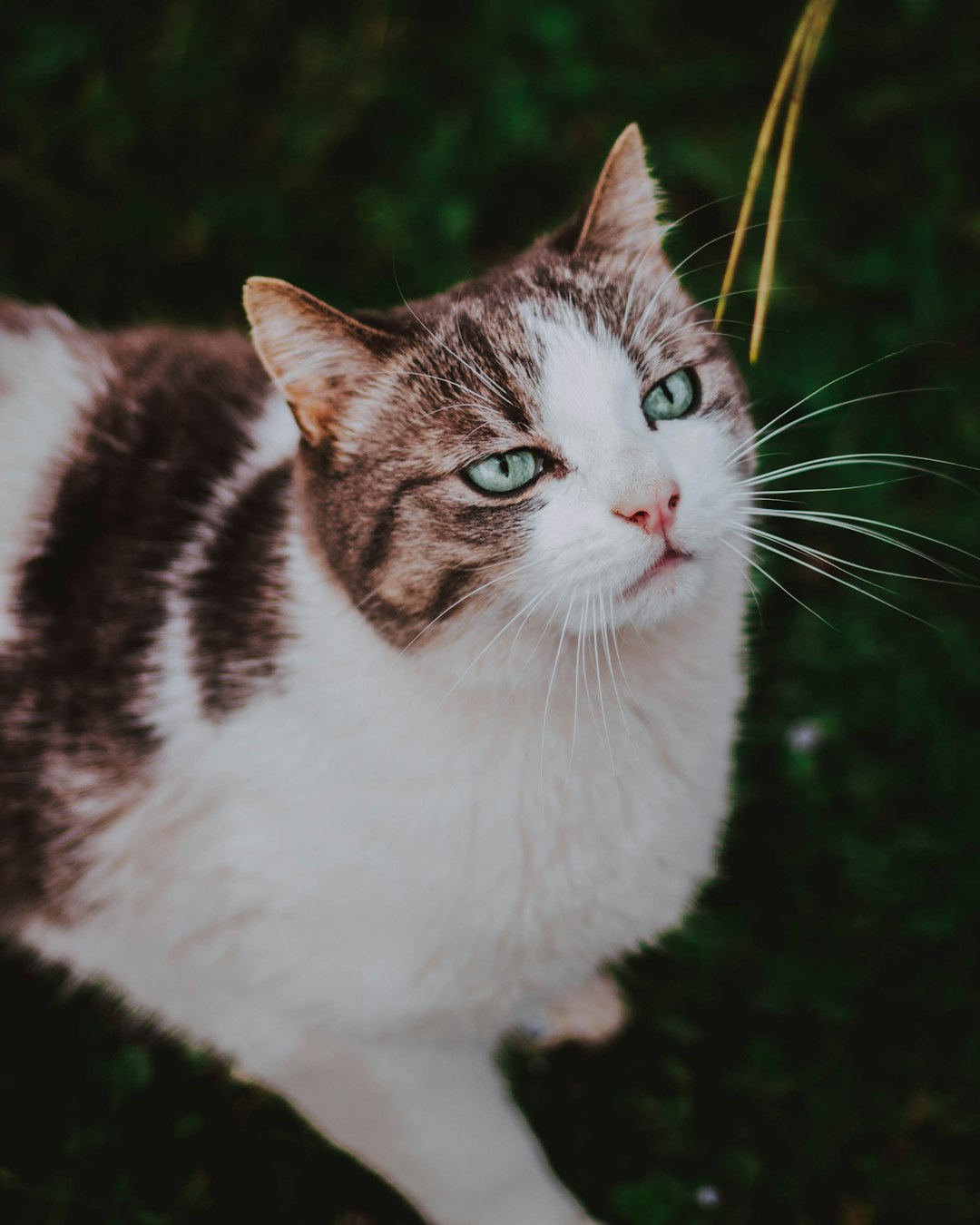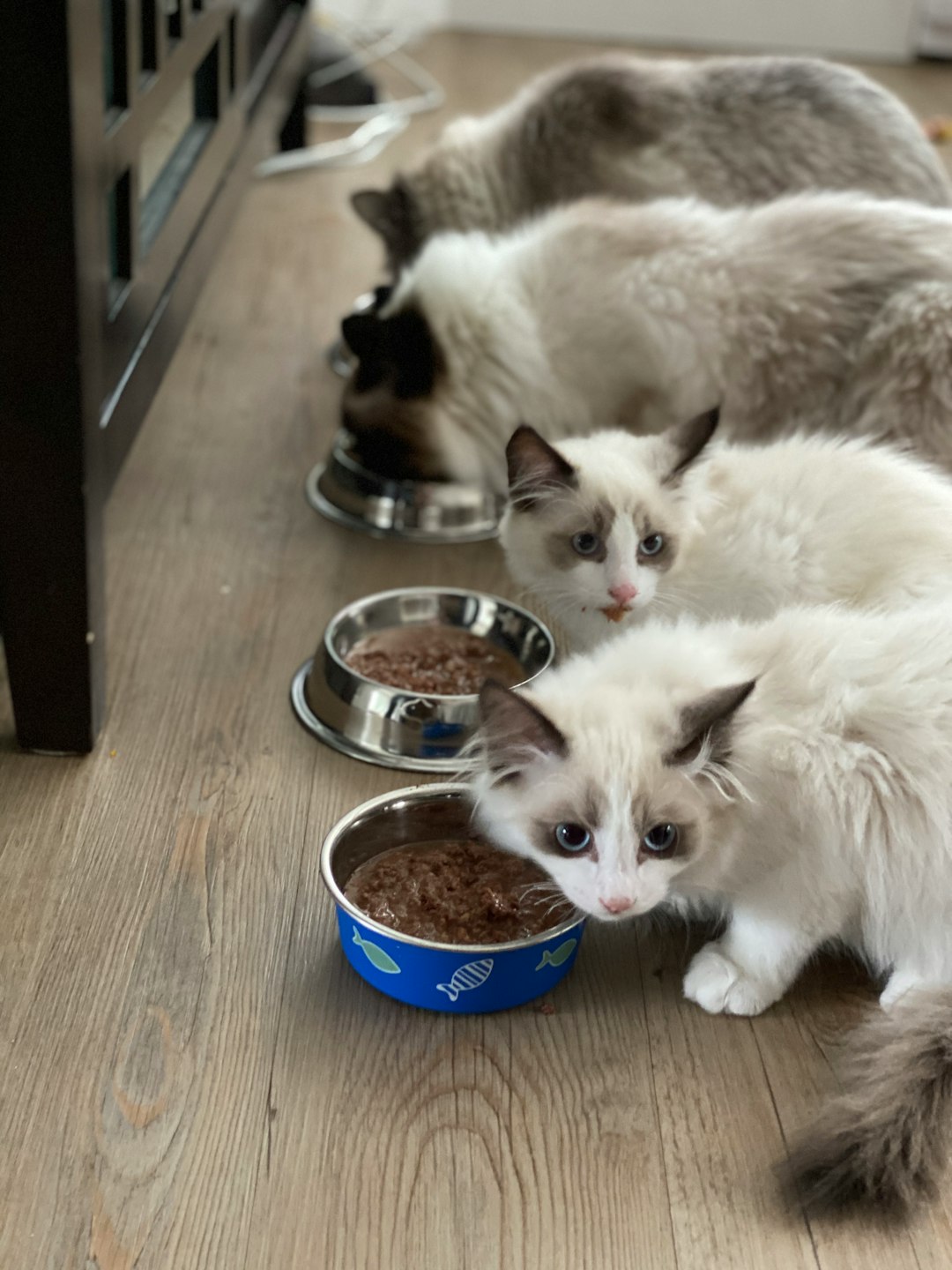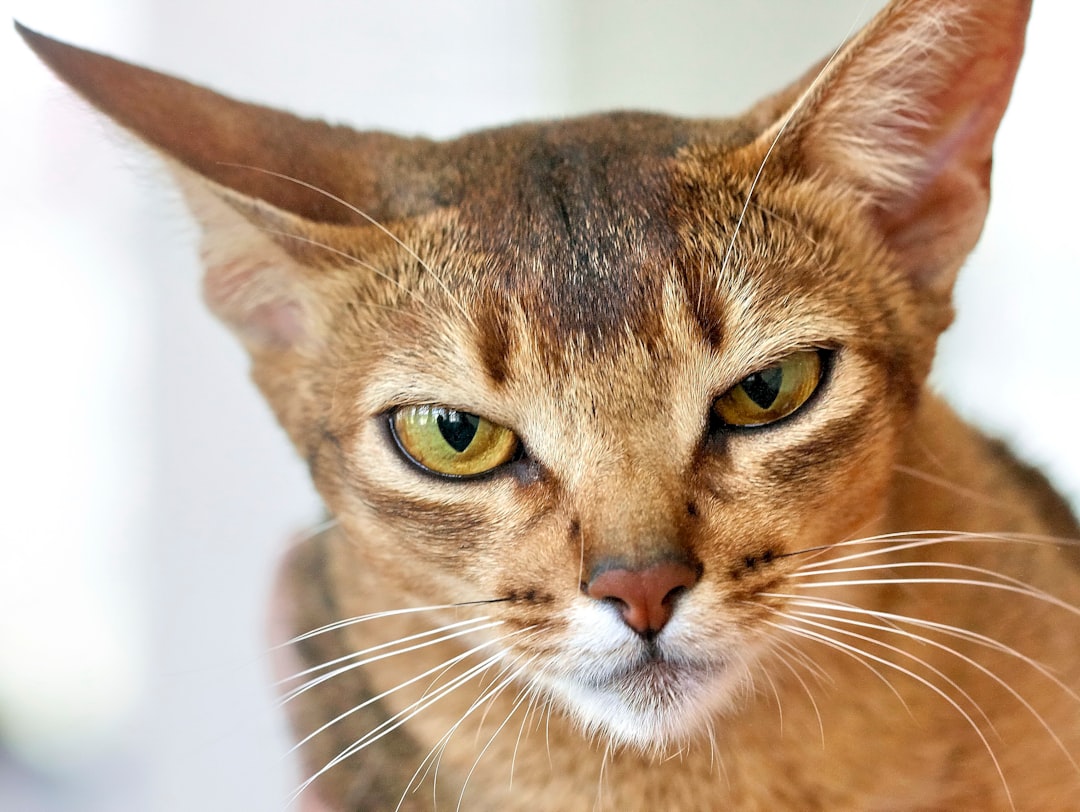Understanding your cat’s dental health is essential for their overall well-being, and a Cat dental chart serves as a vital tool in this journey. Dental issues can often go unnoticed, leading to serious health complications for your furry friend. By familiarizing yourself with the anatomy of a cat’s teeth and the common dental diseases they face, you can take proactive steps to ensure their oral hygiene. Additionally, this blog post will guide you through using the Cat dental chart for at-home checks, emphasizing the importance of regular professional dental care and proper nutrition. Together, we will unlock the secrets to maintaining your cat’s dental hygiene, ensuring they enjoy a happy and healthy life.
What is a Cat Dental Chart?
Definition and Purpose
A Cat dental chart is a specialized tool designed to help pet owners and veterinarians monitor and assess a cat’s dental health. By providing an organized representation of a cat’s teeth, this chart enables individuals to effectively track various dental conditions over time. The purpose of a cat dental chart is to identify any existing dental problems early, facilitating prompt treatment. This proactive approach ultimately promotes overall health, as oral issues can lead to more severe health challenges if left untreated.
How to Use a Cat Dental Chart
Utilizing a dental chart is straightforward. Follow these steps to maximize its benefits:
- Familiarize Yourself: Understand the layout of the chart, which typically includes images and descriptions of each tooth.
- Conduct Regular Checks: Gently examine your cat’s mouth at least once a month, taking note of any changes in the appearance or condition of the teeth and gums.
- Document Findings: Mark any issues such as discoloration or tartar buildup on the chart to track your cat’s dental health over time.
- Schedule Veterinary Visits: Use your documented findings to discuss your cat’s oral health with your veterinarian during check-ups.
Common Dental Issues Identified
Using this chart helps pinpoint several common dental diseases, allowing you to observe indicated conditions effectively. Here’s a brief overview:
| Dental Issue | Description |
|---|---|
| Periodontal Disease | Infection and inflammation of the structures around the teeth, often caused by plaque and tartar. |
| Tooth Resorption | A condition where a cat’s body starts to break down its own teeth, particularly common in senior cats. |
| Gingivitis | Inflammation of the gums, marked by swelling and redness, typically a precursor to more serious conditions. |
| Oral Tumors | Uncommon but can present serious concerns; any unusual lumps should be examined by a veterinarian. |
By regularly using a dental chart, cat owners can play an essential role in their pet’s dental care, improving early detection and treatment of these common dental problems.
The Importance of Dental Health in Cats
Maintaining dental health in cats is crucial for their overall well-being. Just as with humans, poor dental hygiene in felines can lead to various health issues. Let’s explore its significance in more detail.
Impact on Overall Health
The condition of your cat’s teeth and gums impacts not only their oral health but also their general health. Bacteria from periodontal disease can enter the bloodstream, potentially causing:
| Health Risks | Description |
|---|---|
| Heart Disease | Inflammation can lead to endocarditis. |
| Kidney Damage | Toxins may accumulate, affecting kidney function. |
| Liver Issues | Increased waste can impair liver function. |
| Diabetes | Poor dental health can disrupt metabolic regulation. |
Routine Care and Maintenance
Regular dental care is essential. Here’s how you can implement an effective dental routine:
| Routine | Frequency | Purpose |
|---|---|---|
| Teeth Brushing | 2-3 times a week | Reduces plaque and tartar. |
| Dental Treats | Daily | Supports oral hygiene. |
| Professional Cleanings | Annually or bi-annually | Comprehensive dental health. |
Signs of Dental Problems
Being attentive to your cat’s dental health means recognizing warning signs early. Some signals include:
- Bad Breath (halitosis): Persistent bad odor indicates potential periodontal disease.
- Gum Redness: Swollen or bleeding gums reveal inflammation.
- Difficulty Eating: Reduced appetite or changes in eating habits may signal pain.
- Excessive Drooling: An increase in saliva can suggest dental discomfort.
By understanding these aspects of dental health, cat owners can make informed choices and utilize a Cat dental chart to monitor their pet’s oral condition effectively.
Understanding the Anatomy of a Cat’s Teeth
Types of Teeth and Their Functions
Cats possess a total of 30 teeth, each serving a specific function that plays a crucial role in their overall health. Below is a breakdown of the different types of teeth found in cats:
| Type of Tooth | Number | Function |
|---|---|---|
| Incisors | 12 | Used for grasping and grooming |
| Canines | 4 | Essential for tearing meat |
| Premolars | 10 | Crucial for grinding food |
| Molars | 4 | Aid in crushing and grinding |
The arrangement of these teeth facilitates the cat’s carnivorous diet, allowing them to effectively hunt and consume prey.
Tooth Eruption Timeline
Cats experience a specific timeline for tooth eruption. Understanding this timeline is vital for monitoring dental health during different life stages:
| Age (Months) | Teeth Erupted |
|---|---|
| 2-3 | Baby incisors |
| 3-4 | Baby canines and premolars |
| 4-6 | Adult incisors |
| 5-7 | Adult canines and premolars |
| 6-7 | Adult molars |
This progression indicates when you can expect to see permanent teeth and aids in tracking dental health throughout a cat’s life.
Dental Structure Variations by Breed
Interestingly, the dental structure can vary by breed, which can influence dental health. For example:
| Breed | Dental Characteristics |
|---|---|
| Persian | Susceptible to tooth crowding |
| Siamese | Longer jaw structure; unique alignment |
| Maine Coon | Prone to periodontal issues |
Recognizing these differences can help cat owners tailor their dental care strategies effectively, supporting their feline friends in maintaining a healthy mouth.
Understanding the anatomy of your cat’s teeth is critical in assessing dental health. Regular monitoring and care can ensure your cat enjoys a healthy and active life!
Common Dental Diseases in Cats
Dental health is crucial for maintaining your feline friend’s overall well-being. Understanding the common dental diseases that can affect cats allows pet owners to take proactive measures. Here are the prevalent dental issues that cat owners should be aware of:
Periodontal Disease
Periodontal disease is the most prevalent dental issue in cats. It occurs due to the accumulation of plaque and tartar, leading to inflammation of the gums (gingivitis) and, if untreated, can progress to periodontitis. Key indicators include:
| Symptoms | Description |
|---|---|
| Bad breath | Indicates buildup of bacteria |
| Red or swollen gums | Signs of inflammation |
| Loose or missing teeth | Advanced stages of the disease |
Feline Tooth Resorption
Feline Tooth Resorption (FTR) is a painful condition where a cat’s own body starts to break down its teeth. This condition can be difficult to detect until it becomes severe. Symptoms may include:
| Symptoms | Description |
|---|---|
| Decreased appetite | Discomfort while eating |
| Drooling | May indicate pain or discomfort |
| Visible teeth loss | Teeth may appear broken or missing |
Oral Tumors
Oral tumors can also affect your cat’s dental health, ranging from benign growths to malignant cancers. Symptoms often manifest as:
| Symptoms | Description |
|---|---|
| Swelling in the mouth | May be an indication of a tumor |
| Difficulty eating | Due to pain or obstruction in the mouth |
| Unusual behavior | Change in eating habits or lethargy |
Being aware of these common dental diseases can aid in early detection and treatment, ultimately improving your cat’s quality of life. Keeping a Cat dental chart can help track any changes over time. Regular veterinary check-ups are essential for maintaining optimal dental health.
Using the Cat Dental Chart for At-Home Checks
Step-by-Step Guide for Pet Owners
Utilizing the Cat dental chart for at-home checks is an effective way to monitor your feline’s dental health. Here’s a straightforward process:
- Gather Supplies: You’ll need your chart, a flashlight, and preferably a dental mirror.
- Calm Your Cat: Settle your cat in a comfortable position. Gentle handling is essential.
- Examine the Gums and Teeth: Use the flashlight to inspect their mouth closely, focusing on each tooth and the gum line.
- Record Observations: Use the chart to note the condition of each tooth. Look for discoloration, tartar buildup, or any swelling of the gums.
Red Flags to Watch For
While checking your cat’s dental health, be on the lookout for these warning signs:
| Symptoms | Potential Issues |
|---|---|
| Bad breath | Periodontal disease |
| Red or swollen gums | Gingivitis |
| Loose teeth | Tooth decay or infection |
| Excessive drooling | Oral health problems |
| Decreased appetite | Dental pain |
If you notice any of the above symptoms, it may be time to consult a veterinarian.
Frequency of At-Home Checks
Regular dental hygiene checks are crucial. Aim for at-home examinations every month. This frequency helps catch potential issues early, allowing for timely intervention and promoting better overall dental health. Regular monitoring enhances your understanding of what’s normal for your cat and can help indicate when something is wrong.
Professional Dental Care for Cats
When to See a Veterinarian
Recognizing when your cat needs professional dental care is crucial for their overall health. Schedule a veterinary visit if you notice any of the following signs:
| Signs to Monitor | Importance |
|---|---|
| Bad breath (halitosis) | Could indicate periodontal disease or tooth decay. |
| Difficulty eating or chewing | Signals possible oral pain or dental issues necessitating examination. |
| Swollen or bleeding gums | Indicates gum disease or injury that requires prompt professional attention. |
| Excessive drooling | May suggest dental problems that need to be assessed by a veterinarian. |
Types of Dental Procedures
Veterinary dental care can encompass a variety of procedures tailored to address specific needs. Common dental procedures for cats include:
| Procedure Type | Description |
|---|---|
| Dental Cleanings | Removal of plaque and tartar to prevent gum disease and tooth decay. |
| Extractions | Removal of damaged or infected teeth to alleviate pain and prevent further health issues. |
| Oral Surgery | Advanced treatments for complex dental problems requiring surgical intervention. |
| Periodontal Therapy | Comprehensive approaches to treat gum disease and improve oral health. |
Post-Procedure Care
After your cat undergoes any dental procedure, proper aftercare is vital for recovery. Follow these guidelines:
- Monitor for Side Effects: Watch for swelling, excessive bleeding, or signs of pain. Report any concerns to your veterinarian.
- Follow Feeding Instructions: Depending on the procedure, your vet may recommend a soft food diet for several days to prevent discomfort.
- Maintain Oral Hygiene: Continue to monitor your cat’s dental health at home, using a Cat dental chart to track their recovery and any ongoing issues.
Implementing regular professional dental care is essential to ensuring your cat’s dental health remains optimal, significantly contributing to their overall wellbeing.
Maintaining Your Cat’s Dental Hygiene
Maintaining your cat’s dental hygiene is essential for preventing oral diseases and ensuring overall health. Here are several effective strategies to keep your feline friend’s teeth clean and healthy:
Brush Your Cat’s Teeth
Brushing your cat’s teeth is one of the most effective ways to maintain dental hygiene. Ideally, you should start young, but it’s never too late to begin. Follow these steps for effective brushing:
| Step | Description |
|---|---|
| 1 | Choose the right toothpaste. Use toothpaste formulated specifically for cats. |
| 2 | Select a suitable toothbrush. Use a soft-bristled toothbrush or a finger brush designed for pets. |
| 3 | Start slowly. Let your cat get used to the toothbrush and the taste of the toothpaste before attempting to brush. |
| 4 | Brush gently. Gradually clean your cat’s teeth focusing on the outer surfaces where plaque builds up. |
Dental Treats and Toys
Incorporating dental treats and toys into your cat’s routine can also promote good dental health. These products are specifically designed to reduce plaque and tartar buildup. Consider these options:
| Type | Benefits |
|---|---|
| Dental Chews | Help clean teeth while satisfying your cat’s chewing instinct. |
| Rubber Toys | Encourage chewing and massage gums gently. |
| Dental Treats | Formulated to include ingredients that combat plaque and freshen breath. |
Specialty Diets for Dental Health
Some cat food brands offer specialty diets that promote dental health. These formulations contain specific fiber and shape designed to reduce plaque and tartar buildup. When selecting a dental diet, look for:
| Features | Importance |
|---|---|
| Kibble texture | Larger pieces can help scrub the teeth. |
| Added ingredients | Ingredients like kibble designed to reduce plaque. |
| Veterinary approval | Opt for products recommended by veterinarians for maximum effectiveness. |
By implementing these practices, you can greatly enhance your cat’s dental hygiene and overall well-being, setting the stage for a healthier life. Don’t forget to keep referring to the Cat dental chart to track your cat’s dental health over time!
The Role of Nutrition in Dental Health
Maintaining your cat’s dental health goes hand in hand with proper nutrition. A balanced diet can significantly impact oral hygiene, reducing the risk of dental diseases. Here’s a closer look at how nutrition plays a vital role in dental care for cats.
Best Foods for Dental Care
Choosing the right types of food can promote dental health. Here are some options that contribute positively:
| Food Type | Benefits |
|---|---|
| Dry Kibble | Helps reduce plaque through crunching |
| Dental Treats | Specifically designed to promote chewing and clean teeth |
| Raw Meat | Promotes natural chewing and strengthens gums |
Supplements and Their Benefits
Adding supplements can enhance your cat’s dental health. Consider these beneficial options:
| Supplement | Benefits |
|---|---|
| Omega-3 Fatty Acids | Reduces inflammation in gums |
| Enzymatic Formulas | Breaks down plaque and tartar |
| Probiotics | Supports overall oral and gut health |
Avoiding Harmful Foods
Not all foods benefit your cat’s dental health. Avoid the following harmful items:
- Soft Moist Foods: Often stick to teeth, promoting plaque build-up.
- Sugary Treats: Can lead to excessive bacteria growth.
- Dairy Products: Many cats are lactose intolerant, which may lead to digestive issues.
Incorporating the right foods and understanding the impact of nutrition on your cat’s dental health helps prevent serious dental problems. For best results, monitor what your cat eats and consider consulting your veterinarian about creating a tailored diet plan to support their dental hygiene. Remember, a Cat dental chart can assist you in tracking changes in oral health as dietary adjustments are made.
Understanding Cat Dental Chart Readings
Interpreting the Chart
When utilizing a Cat dental chart, familiarity with its readings is crucial for assessing your feline’s dental health. The chart outlines critical indicators such as gum color, plaque build-up, and tooth condition. Each tooth is assigned a specific number which corresponds to its status, enabling you to record observed changes over time systematically. By regularly updating this chart, pet owners can track significant patterns that may require veterinary attention.
Examples of Normal vs. Abnormal Readings
| Condition | Normal Reading | Abnormal Reading |
|---|---|---|
| Gum Color | Pale pink | Red, swollen, or bleeding |
| Plaque Accumulation | Minimal to none | Significant buildup, hard tartar present |
| Tooth Condition | No fractures or discoloration | Chips, cracks, or severe discoloration |
A normal reading indicates good dental health, whereas any abnormal reading may signal underlying dental issues. For instance, if you observe significant plaque accumulation, it could suggest inadequate dental hygiene, potentially leading to periodontal disease.
Reporting Findings to Your Vet
Once you’ve interpreted the readings, it’s vital to share your findings with your veterinarian. Bring your recorded data so they can evaluate any abnormalities you’ve noted. This thorough communication aids the vet in diagnosing potential issues early, allowing for timely intervention and treatment. By discussing your observations, you empower your vet with added insights that can enhance your cat’s dental care.
FAQs About Cat Dental Charts
Common Misconceptions
Many cat owners harbor misconceptions about the Cat dental chart and its functionality. For instance, some believe it is solely a veterinary tool. However, it can also serve as an effective at-home guide, aiding owners in tracking their cat’s dental health. Additionally, some may assume that dental issues in cats are rare. In fact, dental problems are quite common, affecting a significant percentage of feline companions as they age. Understanding what signs to look for greatly improves your cat’s oral health.
How Often Should You Consult a Cat Dental Chart?
For optimal dental care, reviewing the chart regularly is essential. Here’s a quick guideline:
| Frequency | Action |
|---|---|
| Monthly | Perform at-home checks for plaque and gum health. |
| Bi-Annually | Update the chart based on observations and consult with your vet. |
| Annually | Schedule a professional dental exam and cleaning. |
This routine ensures that any issues can be addressed early, promoting better long-term dental health.
Resources for Further Information
To expand your understanding of feline dental care, consider exploring the following resources:
- American Veterinary Medical Association: Offers guidelines and educational material on pet dental health.
- Feline Dental Health Council: A source of specific information regarding dental diseases in cats and prevention techniques.
- Local Veterinary Offices: They often provide pamphlets or online resources focused on maintaining your cat’s oral hygiene.
These resources, combined with the insights from the Cat dental chart, will empower you to take an active role in managing your feline friend’s dental well-being.
Frequently Asked Questions
What is a cat dental chart and why is it important?
A cat dental chart is a visual representation that outlines the dental anatomy of cats, including the number and types of teeth they have. Understanding a cat dental chart is vital for cat owners because it helps them monitor their pet’s dental health effectively. Recognizing the position and condition of each tooth can help in early detection of dental issues such as cavities, gum disease, and other oral health problems. Consequently, being familiar with this chart empowers owners to provide better care and seek veterinary assistance when necessary.
How can I use a cat dental chart to assess my cat’s dental health?
Using a cat dental chart, owners can assess their cat’s dental health by checking each tooth’s appearance in relation to the chart. It allows them to identify any abnormalities such as discoloration, missing teeth, or tartar buildup. During regular grooming or bonding time, owners can palpate their cat’s mouth gently and compare their findings against the chart to notice discrepancies. If the condition of any tooth raises concern, they can then consult a veterinarian for a professional dental examination, ensuring their feline companion maintains optimal dental health.
What are common dental problems in cats that I should look for?
Common dental problems in cats include periodontal disease, tooth resorption, and gingivitis. Periodontal disease is characterized by inflammation of the gums, often leading to pain and tooth loss if untreated. Tooth resorption is when the tooth structure breaks down, causing severe discomfort and requiring dental intervention. Gingivitis, which is the inflammation of the gums, often results from plaque buildup and can affect the overall health of the cat if not managed. Awareness of these conditions, alongside a cat dental chart, enables proactive monitoring and encourages prompt veterinary care when issues arise.
How often should I check my cat’s teeth and gums?
It is recommended to check your cat’s teeth and gums at least once a month to monitor their dental health. Regular checks can help catch any potential issues early on, such as signs of plaque buildup, bleeding gums, or unusual behavior related to eating. Additionally, pursuing routine veterinary dental cleanings, typically performed once to twice a year, complements at-home checks. By staying vigilant and observing changes, cat owners can ensure their pets maintain good dental health and prevent complications that may arise from neglect.
What can I do at home to maintain my cat’s dental health?
Maintaining your cat’s dental health at home can be achieved by implementing a regular oral care routine. Begin by brushing your cat’s teeth with vet-approved toothpaste and a soft brush designed for pets. It’s important to introduce this gradually, so the cat becomes accustomed to the process. Additionally, consider providing dental treats and toys designed to reduce plaque buildup. Regularly inspecting their teeth and gums using a cat dental chart during grooming sessions fosters awareness of their oral health. Lastly, ensuring a balanced diet can also contribute to healthier teeth.



